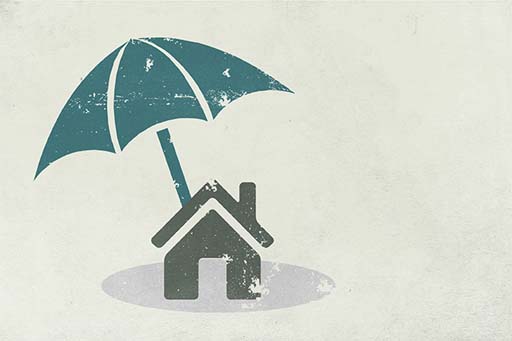8.2 Home insurance
In this section, you will discover which kinds of insurance are compulsory and which are optional. You'll also find out some top tips for managing the cost of home and motor insurance, how to review your own insurance cover and how you might have been affected by mis-sold Payment Protection Insurance (PPI).

Given the size of the potential losses, home insurance is one of the first types of insurance to consider when you first rent or buy your home, and the majority of households, as you saw earlier, usually do decide to take it up.
Home insurance includes buildings insurance for the actual structure (for those who own their own home), and contents insurance for household possessions. Buildings and contents insurance don’t have to be taken out with the same company, and it can be cheaper to shop around for the lowest costs of each separately. However, by using one company for both you may obtain a small premium reduction, and speed up any claims in the event of damage to both home and contents.
If you have a mortgage on your home you don’t have to take out the home insurance offered by your mortgage company. You can make your own (often cheaper) arrangements. If you rent your home you won’t need buildings insurance as that is the responsibility of your landlord. But you should think about contents insurance (also called possessions insurance).
The costs of both elements of home insurance are determined by the risk factors associated with the particular policy and circumstances. Remember that insurance companies ask questions to try to ascertain the risk as accurately as possible. For example, the location of the property will enable judgements about whether it is subject to flooding or subsidence or other natural perils (and thus whether it will require a higher buildings insurance premium). Also, the rate of burglary in the area will be one of the main risk factors considered for contents insurance.
Here are some of the main variables to think about when assessing exactly the kind of contents insurance you need – adding them to your policy will increase the cover but also the premium.
- If you have limited possessions (for instance, when setting up home), a basic policy offering only a small amount of cover may be enough – this will keep the premium low.
- Paying for cover for £30,000 of contents insurance when you have only £15,000 worth of items would be wasting money.
- Having cover that does not equal the actual value of your possessions will mean that only a proportion of any actual claim will be paid.
- Accepting a higher excess in return for a lower premium is like a small element of self-insurance. It may help you to build up a no-claims discount by paying for small claims yourself.
- Different insurers may charge different premiums for the same cover, so decide exactly what kind of cover you require before shopping around for the best deal.
